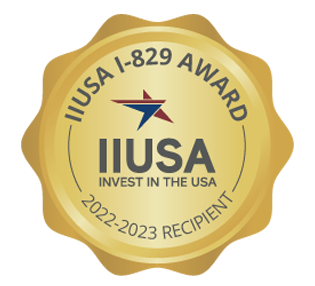EB-5 Visa is a pathway to U.S. Permanent Residence or green card. EB-5 Visa Program was introduced in 1990 by the United States Congress to attract foreign direct investment into the United States. To be eligible for a green card under the EB-5 Visa Program, foreign nationals are required to invest a minimum of $800,000 in a Targeted Employment Area (TEA) or $1,050,000 in a non-TEA. The investment should result in creation of at least 10 new American jobs.
Majority of the EB-5 Projects are in Targeted Employment Areas. Targeted Employment Areas are designated by the United States Citizenship and Immigration Services (USCIS). To qualify as a Targeted Employment Area, census tract needs to meet one of two requirements:
- High Unemployment: The geographic location must have an unemployment rate of at least 150% compared to the national rate at the time of the investment
- Rural Area: The geographic location should have a population of 20,000 or less and not be near a metropolitan area with a population over 20,000, as designated by the US Office of Management and Budget
After the EB-5 Reform and Integrity Act (RIA) was signed on March 15, 2022, new requirements came into law for the EB-5 Program. The EB-5 Reform and Integrity Act introduced three categories of visa set aside for priority processing. The three categories are:
- 20% EB5 Visa set aside for rural TEAs
- 10% EB5 Visa set aside for high unemployment TEAs
- 2% EB5 Visa set aside for infrastructure projects
The visas set aside allow for priority processing of applications and have a separate priority date from other categories such as direct and unreserved. A different priority date can be advantageous to investors from certain countries where the EB-5 Visas have been oversubscribed and resulted in retrogression such as China, India and Vietnam. For instance, per the October 2022 Visa Bulletin, priority date for Indian born investors under unreserved EB-5 Visa category is November 5, 2019. However, for high unemployment and rural area categories, it is current. This implies that Indian born investors residing in the United States are eligible to file Application for Adjustment of Status (Form I-485) concurrently with their Application for a Conditional Green Card (Form I-526E) if the EB-5 Project is in a High Unemployment Area or a Rural Area.
Concurrent filing of Application for Adjustment of Status allows investors to remain in the United States while their Application for a Conditional Green Card is being processed even if their underlying visa or status expires. For example, an international student residing in the United States on a Student Visa (F-1 Visa) can continue to live in the United States if a concurrent Application for Adjustment of Status (I-485) is filed along with an Application for a Conditional Green Card (I-526E) even if the F1 Visa expires subsequently.
The EB-5 Reform and Integrity Act also restricted the way high unemployment is calculated for a particular census tract by only allowing inclusion of any or all census tracts directly adjacent to such census tract.
*This article is for informational purposes only. It is recommended investors contact an experienced EB-5 attorney and other professionals as the investor deems fit prior to making an investment and filing an immigration petition.
For more information on GGG and EB-5, please follow us on YouTube, Twitter, Facebook, LinkedIn and Instagram.


